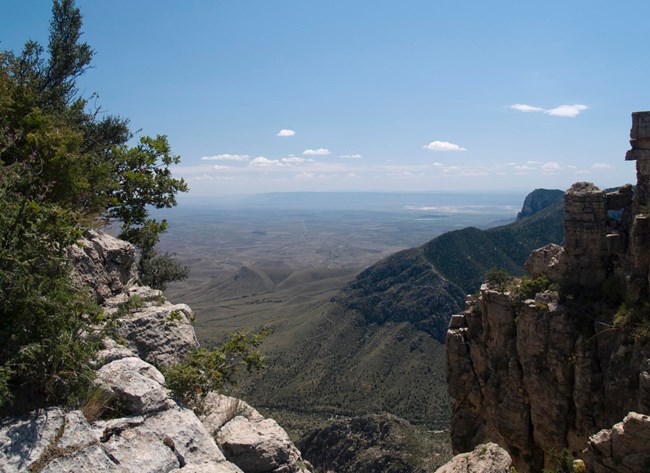Learn about NRCAs
The Natural Resource Condition Assessment (NRCA) Program provides framework, funding, and publishing support to parks to aid in the synthesis and documentation of natural resource conditions. Condition assessment reports are a tool to describe selected park resources, and record a snapshot of their current condition, identify trends, and identify potential or current threats and stressors. Understanding the condition and trend of natural resources is key for parks and NPS planners to appropriately prioritize and allocate stewardship resources.

NPS Photo.
Traditional NRCA Report: 2013
In an effort to better understand the natural resources and processes within this park, a Natural Resource Condition Assessment was conducted and published in 2013. National Park Service representatives and St. Mary’s University of Minnesota collaborated to determine park needs and available data. This team chose 16 resource topics to evaluate:
- Fire regime |
- Desert scrub |
|||||
- Dune communitites |
- Birds |
|||||
- Sky island (montane forest) |
- Reptiles |
|||||
- Riparian and canyon communities |
- Mountain lion |
|||||
- Semidesert grassland |
- Air quality |
|||||
- Water quality |
- Hydrology |
|||||
- Soundscape |
- Geological and paleontological resources |
|||||
- Viewscape |
- Dark night skies |
Four resource topics were considered to be in good condition: semidesert grasslands, birds, viewscape, and geological and paleontological resources. Two resource topics were given a conditions status of moderate concern: air quality and sky islands (montane forest). Fire regime is the only resource topic given a condition status of high concern. The remaining nine resource topics were not assigned a condition status due to lack of historic or current data. Current condition could not be determined for many components due to existing data gaps; however, several of these data gaps are being addressed through monitoring programs.
Understanding the condition of these resources can help managers prioritize management objectives and better focus conservation strategies to maintain the health and integrity of these ecosystems.
Understanding the condition of these resources can help managers prioritize management objectives and better focus conservation strategies to maintain the health and integrity of these ecosystems.
For other reports and natural resource datasets visit the NPS Data Store.
Source: NPS DataStore Collection 7765 (results presented are a subset). To search for additional information, visit the NPS DataStore.
Last updated: August 15, 2022
